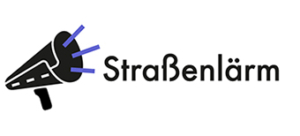Adler im Horst
Haselhorst
The “Monument of National Uprising” was erected in 1936 to commemorate the National Socialist takeover in 1933 in the Reichsforschungssiedlung Haselhorst. The associated, realistically depicted eagle in the eyrie is a bronze sculpture by Max Esser (1885 – 1945)
The bird of prey looking into the distance has been a symbol of power since Roman antiquity, which was integrated into fascist imagery in the 20th century. In this context of remembrance of the takeover by the National Socialist German Workers’ Party (NSDAP), which is more than problematic from today’s point of view, the majestically depicted mother animal symbolizes the position of the NSDAP, which had gained power in 1933 and was also supposed to spread its wings protectively over the young NS state and its citizens.
The function of the monument, however, went beyond commemorating the NSDAP’s seizure of power. Erected and inaugurated to celebrate the completion of the so-called Reichsforschungssiedlung, a project for more affordable housing in Berlin initiated by a competition announced by the Reichsforschungsgesellschaft für Wirtschaftlichkeit im Bau- und Wohnungswesen (Reich Research Society for Economic Efficiency in Construction and Housing) as early as 1928, it imprints the nationalist stamp on the building complex. Although the building policy of the Weimar Republic was purposefully opposed by the NSDAP and several of the architects involved were forced to leave the country after 1933 due to political persecution, the settlement was reinterpreted by the National Socialists with an inscription on a memorial stone (“[…] healthy living conditions for around 13,000 Volksgenossen […]”) as an achievement of the NS state and thus ideologically appropriated.
The construction was realized by the housing company Gewobag, which was still called Heimag at the beginning of the construction. After the NSDAP seized power, the Gewobag board members Hermann Meyer and Franz Czeminski were replaced by Adelbert Pfeil and Hans Kammler (1901-1945?), who were loyal to the party. Franz Czeminski (1876-1945), who was also an SPD politician, was deported to Papestraße concentration camp prison on April 13, 1933, where he was mistreated and tortured. Fred Forbát (1897-1972) was one of the eight architects of the settlement. The Jewish architect was forced to dissolve his office in 1933 and fled to Sweden. His parents and siblings were taken to Auschwitz concentration camp and murdered there.
Our Recommendation
Although the monument was supposedly denazified after the war by removing the inscription in bronze letters, the Nazi imagery remains on site to this day. Placed next to a children’s playground in the courtyard of the housing estate, a reinterpretation can take place: the residents of the apartment building certainly watch over their children playing on the climbing frames and in the sandbox, just as the eagle mother depicted watches over her own offspring. However, if the ideological original function of the depiction is known, the proximity to the adolescents takes on a rather macabre flavor. Moving the sculpture to a museum space related to art or urban history is recommended. There, the complexities of this monument fragment can be critically reappraised and communicated in an understandable way. Alternatively, an information board on site could provide the much needed contextualization and historical visual material. This could, especially in connection with the museum apartment within the Reichsforschungssiedlung Haselhorst, represent a thoroughly sustainable mediation approach.
Literature
Bildhauerei in Berlin (Hg.): Adler im Horst. Adler mit Jungen, Denkmal der nationalen Erhebung, URL: https://bildhauerei-in-berlin.de/bildwerk/adler-im-horst, 13.04.2021.
Kohse, Petra: Geschichte am Straßenrand: Der Adlerhorst – Nazi-Stempel auf dem Spielplatz in Haselhorst, in: Berliner Zeitung, vom 27.7.2018. URL: https://www.berliner-zeitung.de/kultur-vergnuegen/geschichte-am-strassenrand-der-adlerhorst-nazi-stempel-auf-dem-spielplatz-in-haselhorst-li.63745, 13.04.2021.
Gewobag: Kriegsschäden und Wiederaufbau, URL: https://www.gewobag.de/soziales-engagement/stadtteilinfos/spandau/haselhorst/kriegsschaeden-und-wiederaufbau/, 13.04.2021.
Digitalcosmonaut (Hg.): The Nazi Eagles of Berlin, URL: https://digitalcosmonaut.com/2015/nazi-eagles-berlin/, 13.04.2021.
Rada, Uwe: Kleine Küche, großer Anspruch, URL: http://www.uwe-rada.de/themen/stadt_haselhorst.html, 13.04.2021.
